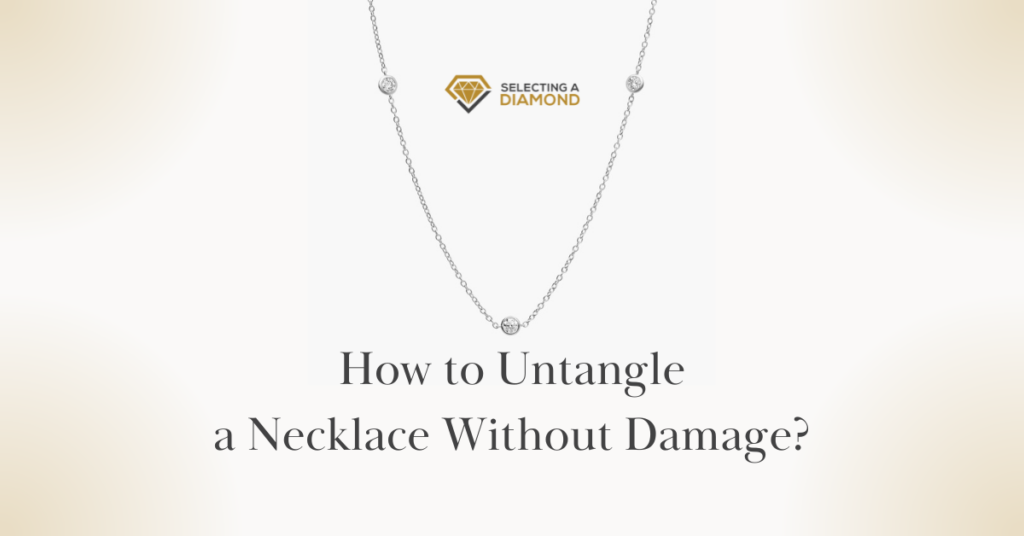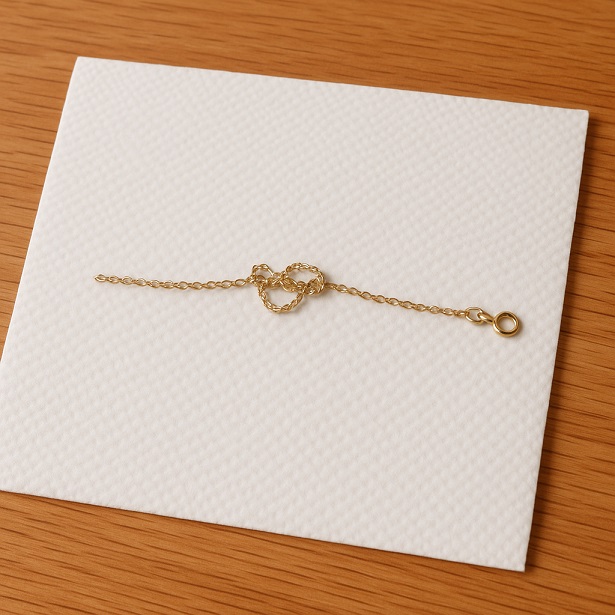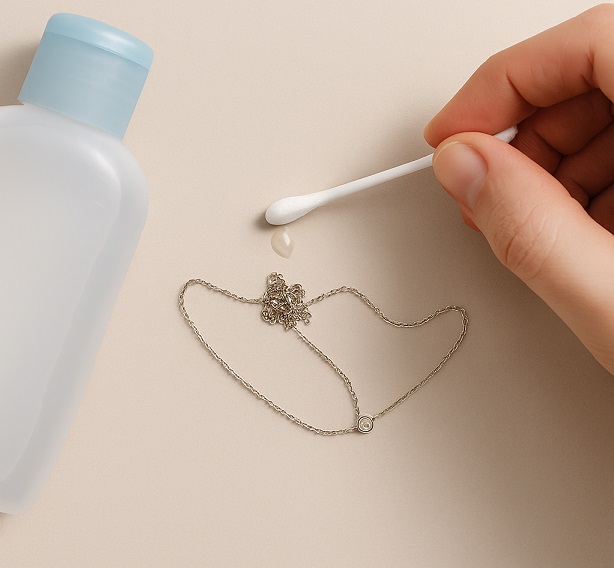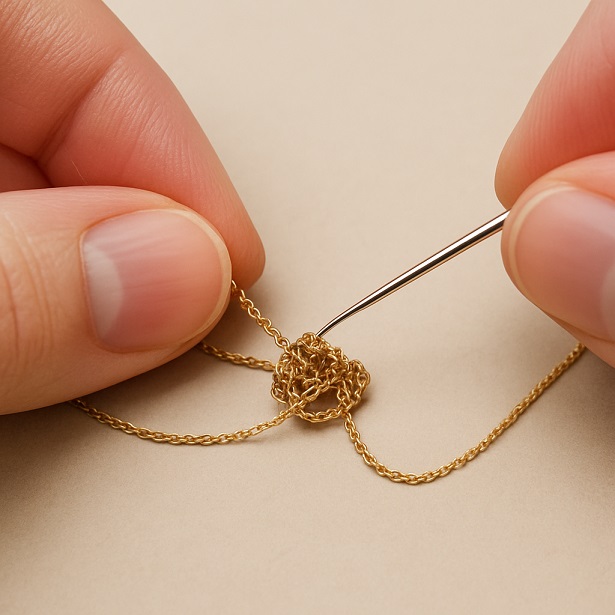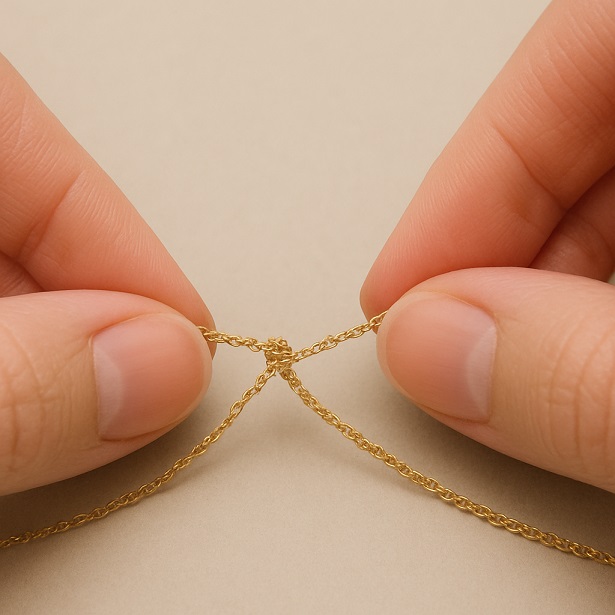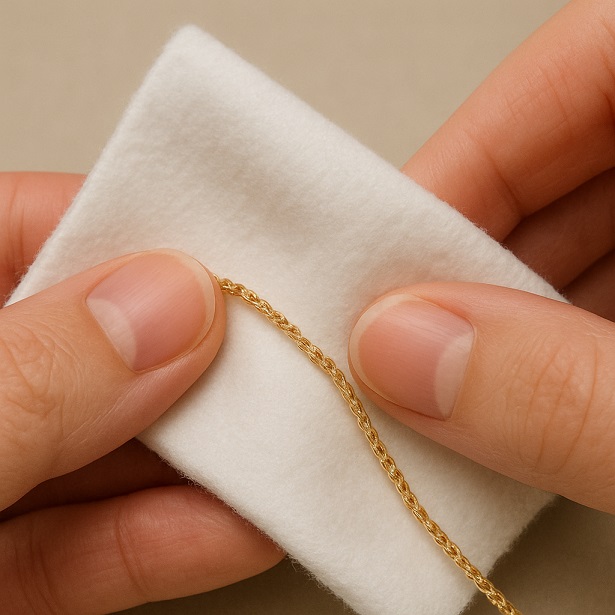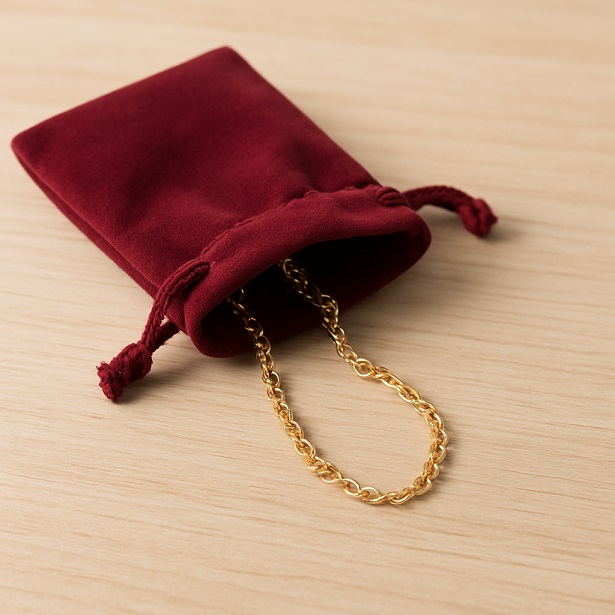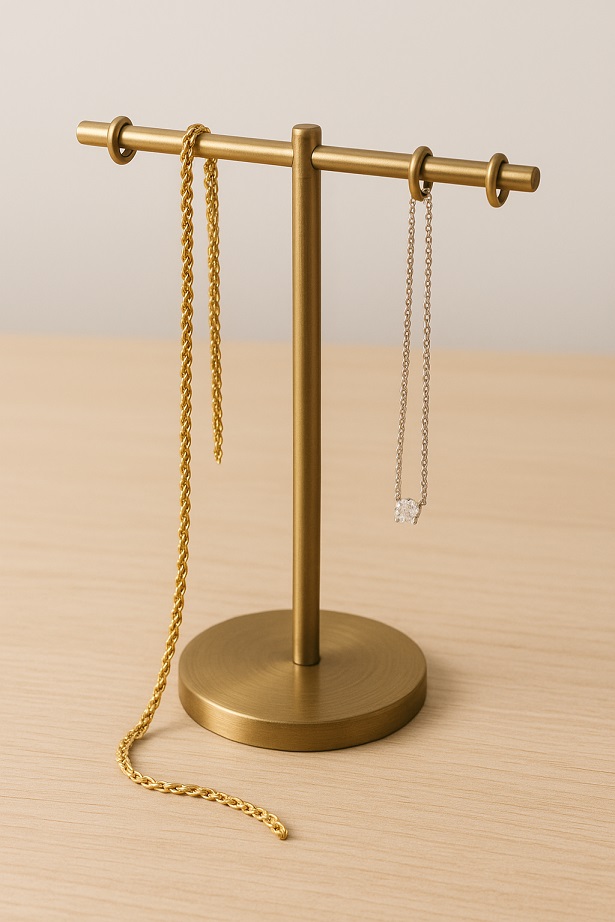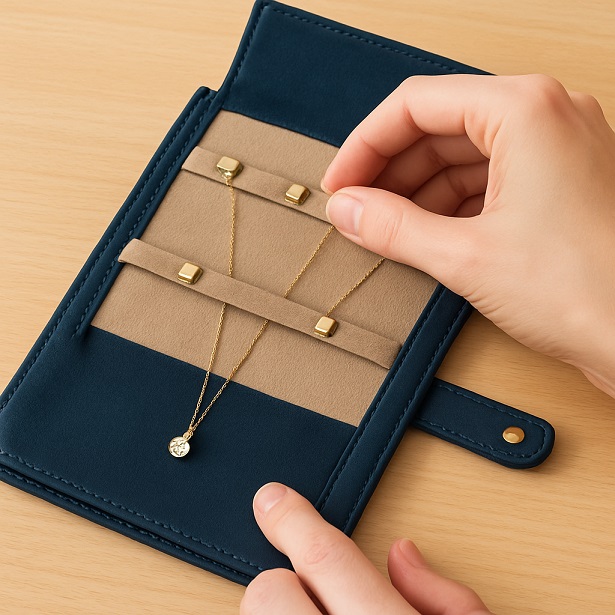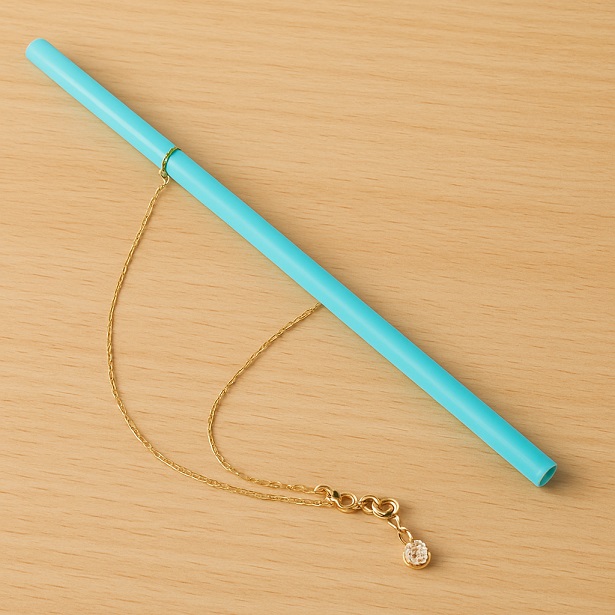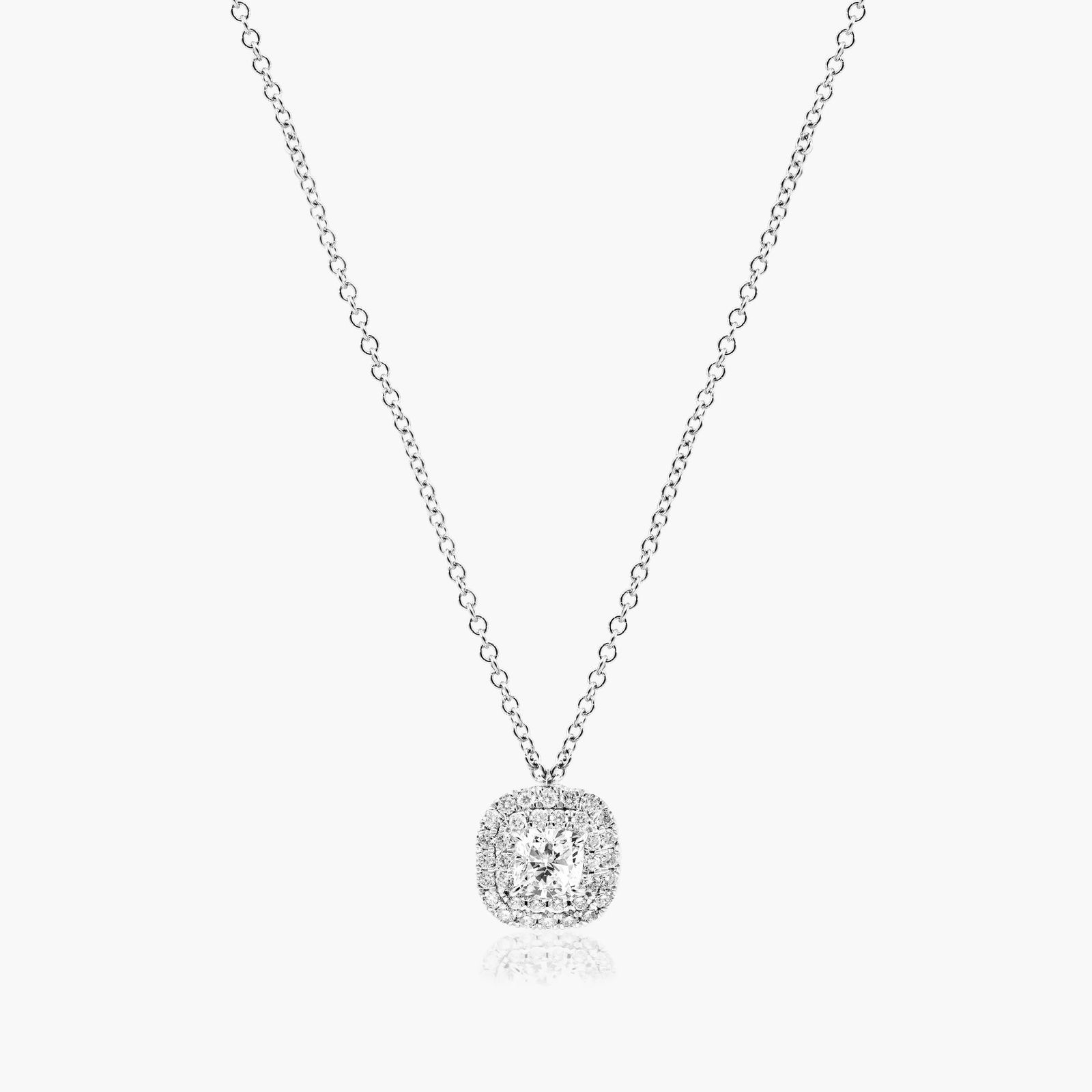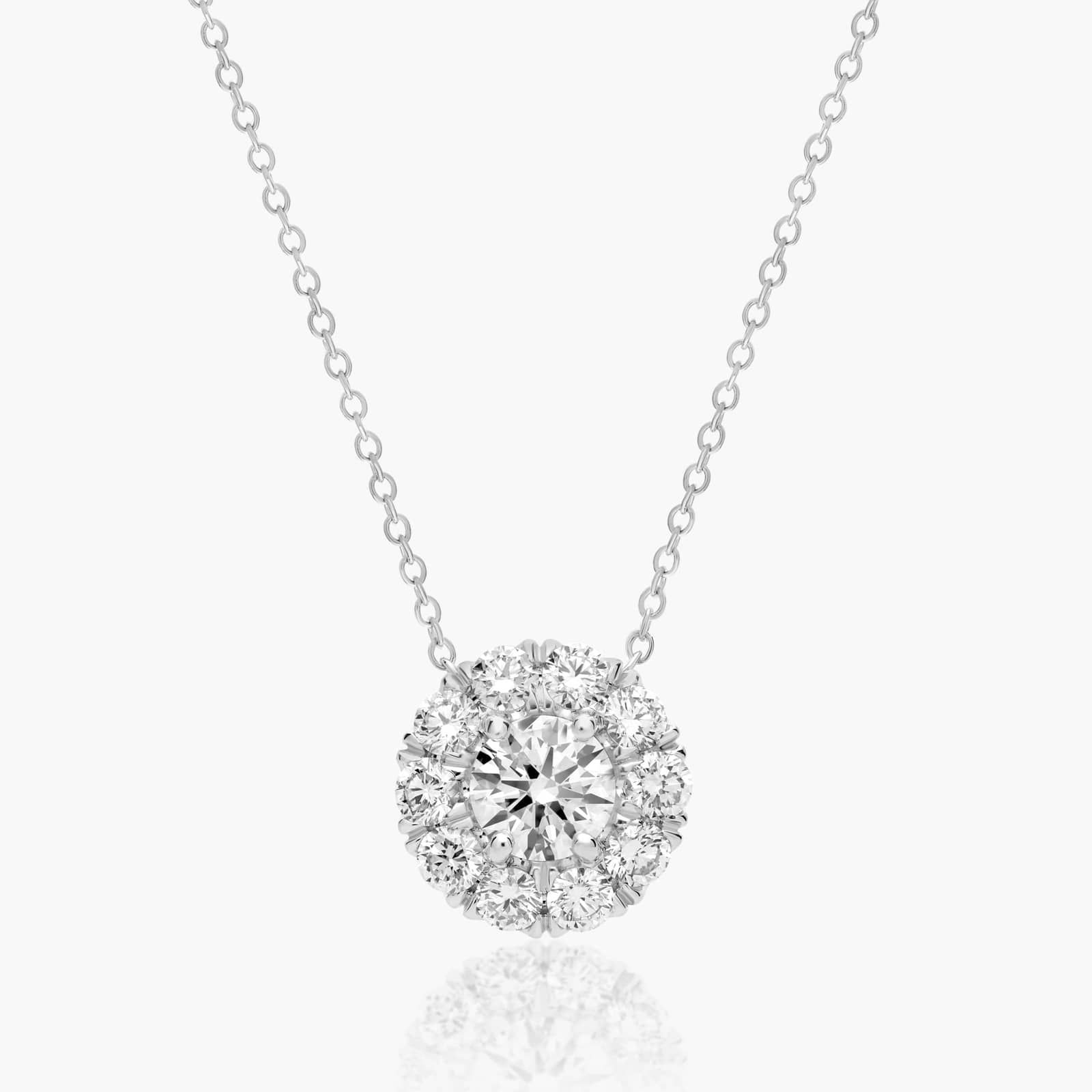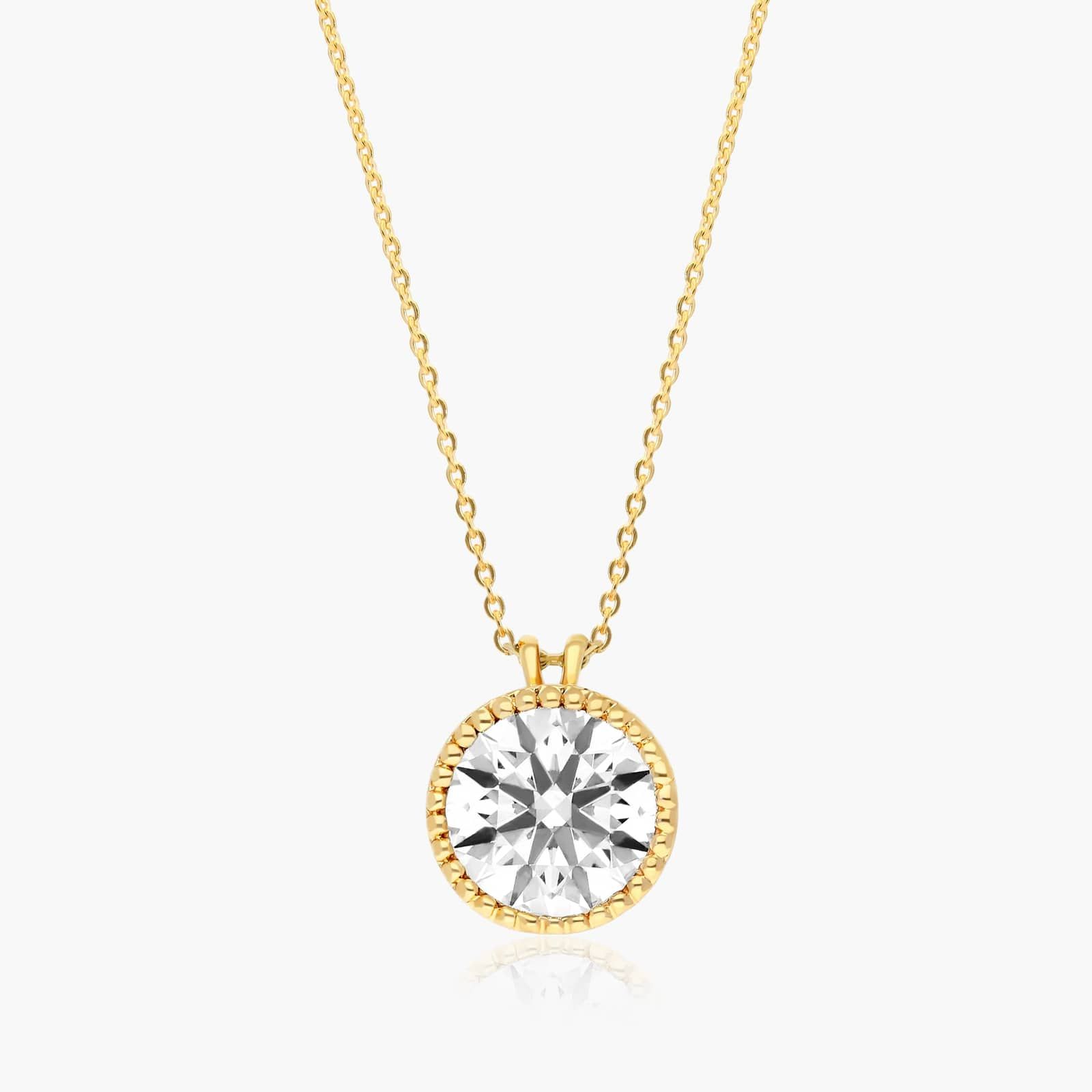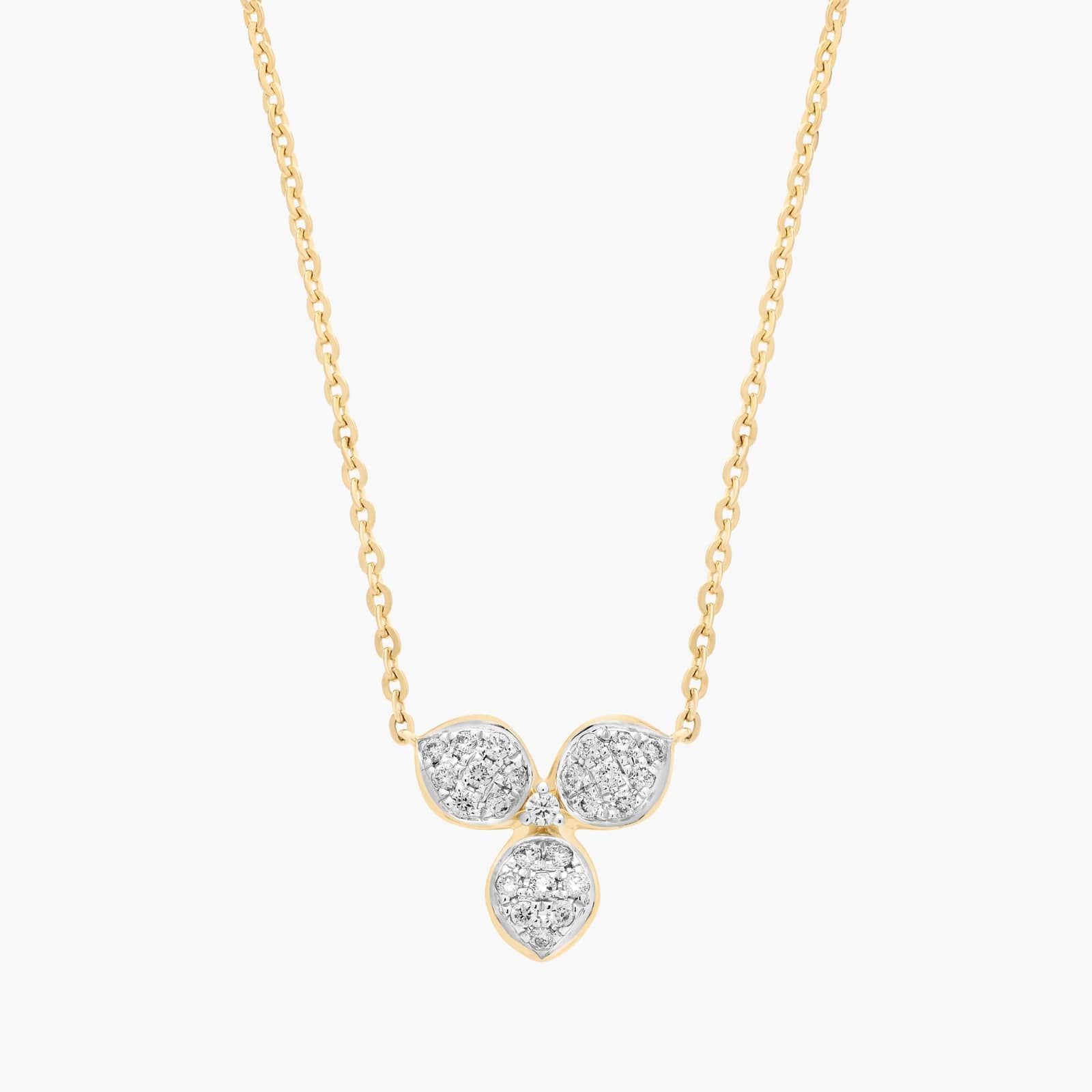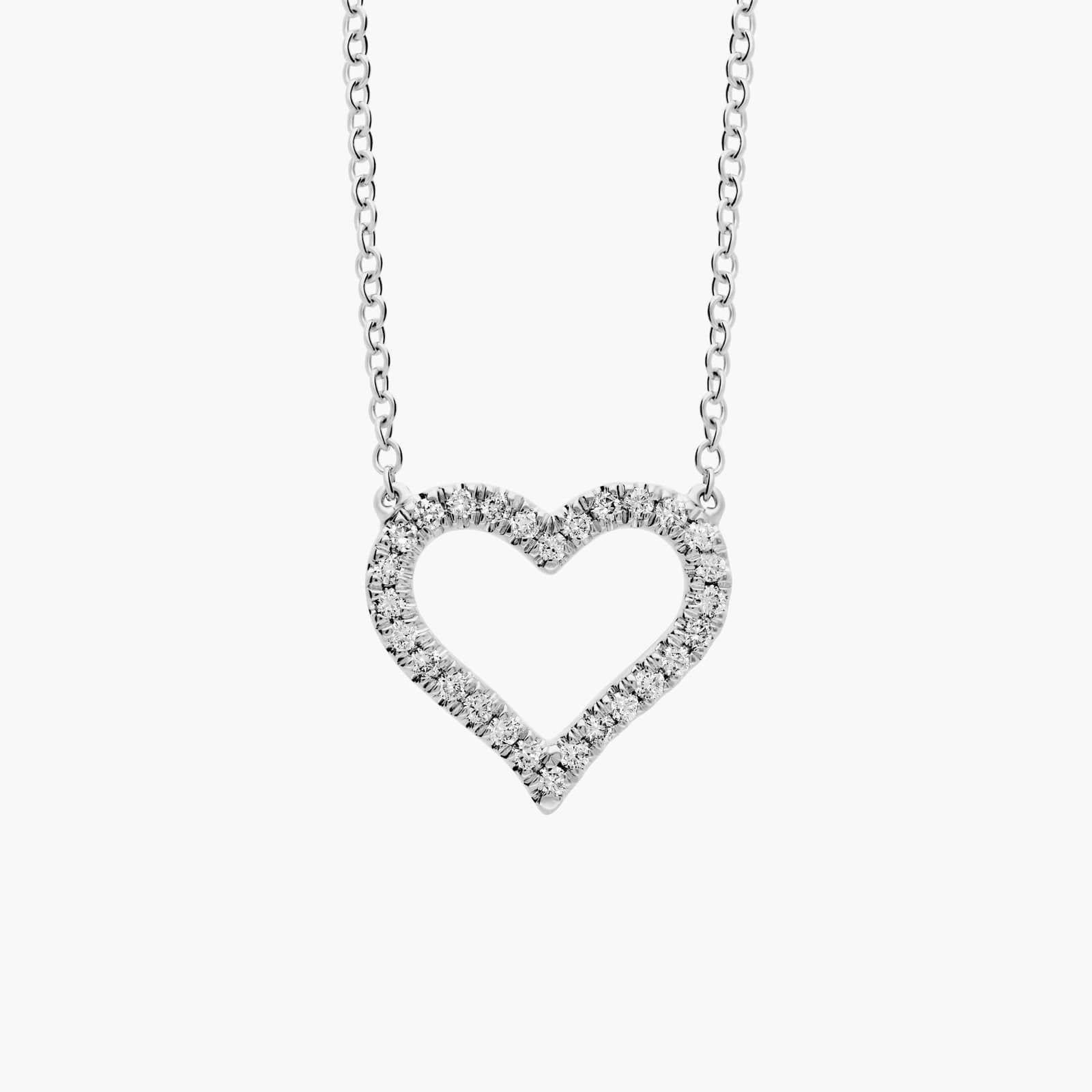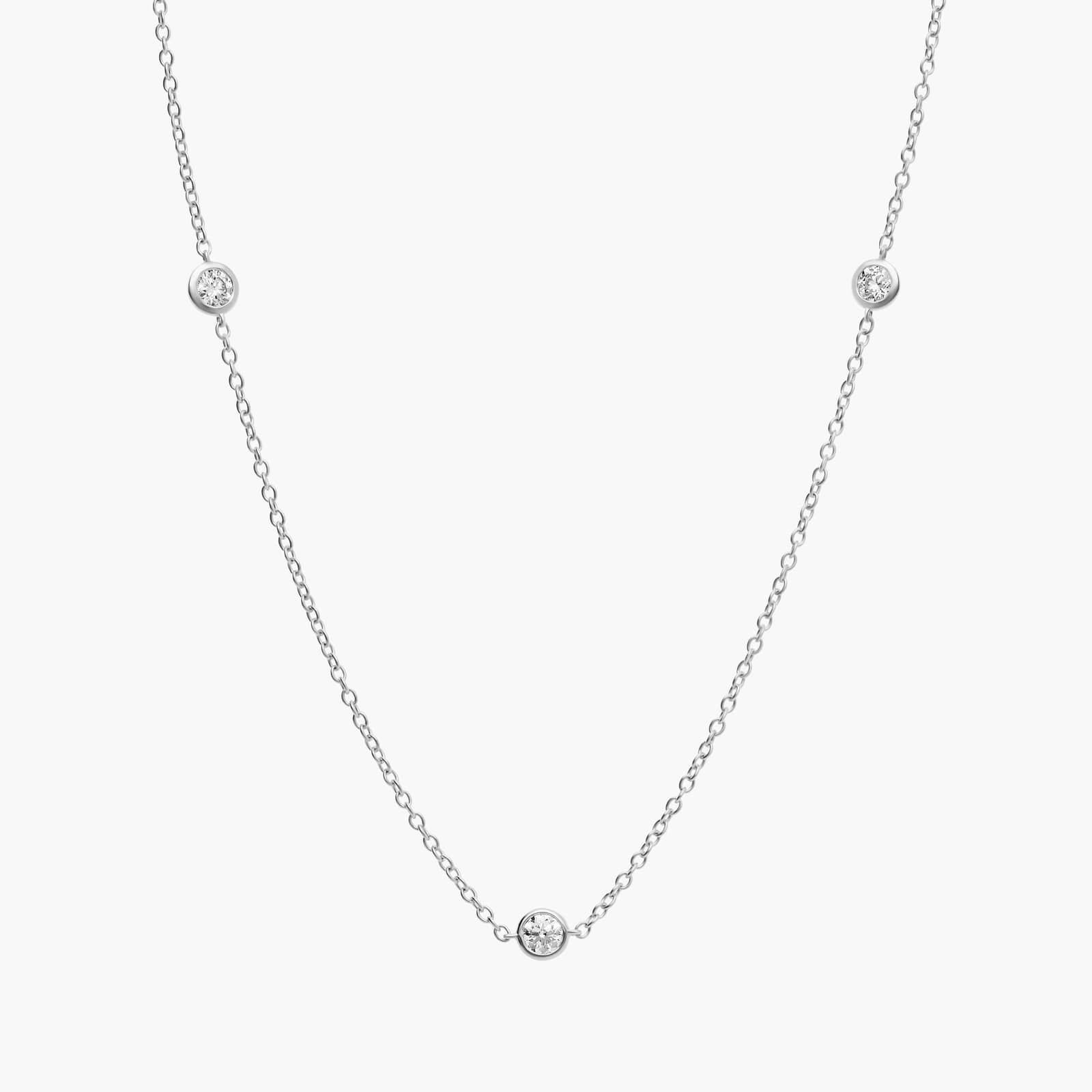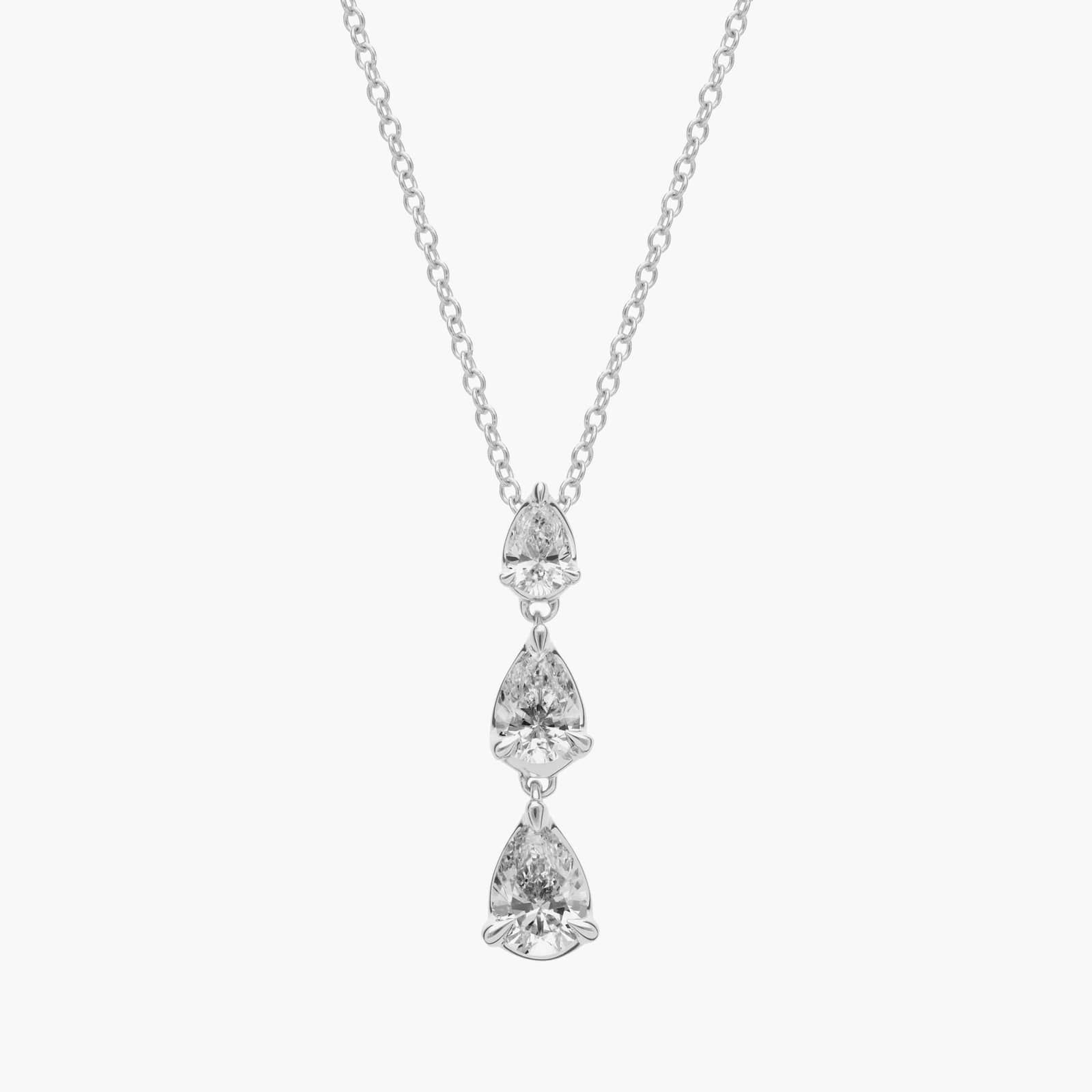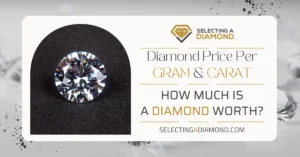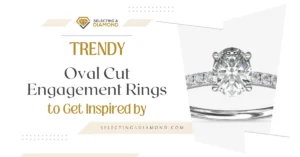We may earn a commission when you purchase through our affiliate links, at no extra cost to you. This helps support our work and allows us to continue providing unbiased, expert diamond advice.
Few things are more frustrating than picking up your favorite necklace, only to find it tied up in a tiny, stubborn knot.
Whether it’s a delicate gold chain or a diamond necklace you really care about, the last thing you want is to pull too hard and break it.
That’s why knowing how to untangle a necklace the right way can save you time, stress, and even money.
➡ In this article:
You’ll learn simple, safe steps to get your necklace back in shape without damaging the chain.
➡ We’ll also talk about:
What not to do, how to deal with multiple tangled necklaces, and the best ways to store them so it doesn’t happen again.
And just in case you’re shopping for something new, we’ll show you some stunning diamond necklaces from trusted stores because some pieces are just too beautiful to let tangle!
Why Necklaces Tangle So Easily?
Necklaces… especially the thin, delicate ones, have a sneaky way of getting tangled, even when you’re careful.
But why does it happen so often?
It comes down to how necklaces are shaped, most chains are long, flexible, and light.
That means they can twist and loop around themselves with just a little movement.
If you toss one into a jewelry box, let it sit in a bag, or even just drop it onto a table, the chain can fold and knot without you even noticing.
Travel makes it worse.
When a necklace moves around in a purse or suitcase, it rubs against other jewelry, rolls into itself, or gets pressed into tight corners.
That’s how small knots turn into tight, hard-to-fix tangles.
Fine chains… like those used in gold or diamond necklaces, are especially easy to tangle because they’re smooth and flexible.
The more delicate the piece, the more likely it is to knot up quickly.
So if you’ve ever wondered how your necklace managed to tie itself in a knot just sitting there… now you know.
It’s not just you. It’s how necklaces behave when they’re not stored or handled carefully.
What You Should Never Do?
When your necklace is tangled, it’s tempting to just pull on the chain and hope it works itself loose.
But that’s actually one of the worst things you can do.
Delicate chains, especially gold or diamond-accented ones—can snap or stretch if you use too much force.
Once a chain is bent out of shape, it’s hard (and expensive) to fix.
Here are a few things you should never do when trying to untangle a necklace:
-
Don’t Pull or Tug
Pulling only tightens the knot and makes it harder to fix.
Worse, it can snap the chain in seconds, especially if it’s thin or old.
-
Don’t Use Your Nails to Pick at the Knot
Using your fingernails or even tweezers too aggressively can scratch the metal or catch on small details, like clasps or gems.
-
Don’t Add Water
Water might seem harmless, but it can actually make certain metals tarnish, especially if the necklace isn’t solid gold or silver.
-
Don’t Rush
Trying to untangle it quickly, especially when you’re frustrated, usually makes things worse.
You might pull it too hard or twist it the wrong way without realizing it.
Being gentle is key.
Treat your necklace like it’s fragile, because it is!
The next section will show you the right way to handle knots without causing damage.
How to Untangle a Necklace Step by Step
Untangling a necklace might seem tricky at first, but with a little patience and the right method, you can fix it at home without damaging anything.
Here’s a simple, step-by-step guide that works for most types of chains, even the delicate ones.
1. Lay the necklace flat on a clean surface.
Use a smooth, flat surface like a table or countertop.
A white paper towel or cloth underneath makes it easier to see the knots.
2. Add a drop of baby oil or sprinkle a bit of baby powder.
These help loosen the knot and make the chain easier to move.
If you’re using oil, apply just a small drop with a cotton swab.
3. Gently work on the knot using a pin or needle.
Hold one end of the necklace steady and use the pin to slowly tease the knot open.
Go slow and don’t force anything. The goal is to loosen, not pull.
4. Use your fingers to separate the loosened chain.
Once the knot starts opening, you can carefully use your fingers to pull the chain apart.
If it’s still tight, add a tiny bit more oil or powder.
5. Wipe the necklace clean.
Use a soft cloth to remove any oil or powder before wearing or storing it.
If it’s a diamond or gold necklace, this step also helps it shine like new.
That’s it.
No need for fancy tools, just a little care, some household items, and a bit of patience.
You might be interested in:
Clean Your Diamond Ring at Home: Pro Tips and Things to Avoid – Best Jewelry Cleaners
When to Use Baby Oil or Powder (and When Not To)
Baby oil and baby powder are both helpful when you’re trying to loosen a tight knot in a necklace.
But whether you should use them depends on what your necklace is made of.
If the chain is really tight and won’t budge, a tiny bit of baby oil can help make the metal slippery so the knot comes apart more easily.
Use a cotton swab and just one small drop. It works well for most metals, especially solid gold and silver.
Baby powder is a good option too.
It helps dry out the knot and make the links slide past each other without sticking.
Powder is also safer if you’re not sure what your necklace is made of.
But here’s when you should not use oil or powder:
- If your necklace is plated (like gold-plated or silver-plated), oil can wear down the thin layer of metal.
- If your necklace has pearls or soft gems, oil or powder might damage them or make them lose their shine.
- If the chain is already loose or fragile, adding anything might make it worse.
When in doubt, start without any product. Try gently loosening the knot first.
Only add oil or powder if the chain isn’t moving at all, and always clean the necklace when you’re done.
It’s all about knowing your chain and taking your time.
How to Untangle Multiple Chains at Once?
Tangled one necklace? That’s tricky.
Tangled two or three together? That feels like a small disaster.
But don’t worry.
You can untangle multiple chains at once, without making things worse, if you stay calm and follow a few smart steps.
1. Lay all the necklaces flat and separate what you can.
Put them on a clean surface where you can clearly see what’s going on.
Start by gently pulling apart any parts that are not tangled.
The more space you create, the easier it’ll be to focus on the real knots.
2. Look for where the chains cross.
Sometimes the chains are just twisted around each other, not fully knotted.
Carefully follow one chain from the clasp to the pendant or end.
Use your fingers or a toothpick to lift and untwist those spots.
3. Use baby powder or oil only if the knot is tight.
If you have two delicate chains stuck in the same knot, adding a bit of baby oil or powder can help loosen the knot.
Just like before, use a small amount and wipe them clean after.
4. Work on one chain at a time.
Don’t try to pull all of them apart at once.
Pick one necklace and gently work it out of the knot first, then move to the next.
Think of it like unthreading spaghetti—slow and one piece at a time.
5. Don’t pull hard, ever!
Tugging will only make the mess tighter.
If it starts to feel worse, stop for a minute and look at it from a different angle.
It takes patience, but even a bunch of tangled necklaces can be saved.
And once you’ve done it once, you’ll know exactly what to do next time.
Storing Necklaces to Avoid Tangles
The best way to deal with tangled necklaces is to stop them from tangling in the first place!
And the good news is, it’s easier than you think.
As mentioned above, necklaces tangle when they’re tossed into a drawer, dropped into a bag, or left loose with other jewelry.
So the trick is to keep them separate, flat, and still.
One of the easiest ways is to store each necklace in its own small pouch.
You can use soft cloth bags or even mini zip bags if you’re careful.
Just make sure to leave part of the chain hanging out a little so it doesn’t twist.
Another smart option is a necklace hook or jewelry stand.
You hang each necklace on its own hook, which keeps them untangled and easy to see.
It also helps you pick one quickly without sorting through a pile.
For traveling, use a jewelry roll or travel case made for necklaces.
These usually have small straps or clips inside to hold the chains in place.
It’s a great way to keep your jewelry safe and organized on the go.
If you don’t want to buy anything, try a simple trick at home.
Thread the necklace through a plastic straw and clasp it.
That keeps the chain straight and tangle-free inside your drawer or bag.
No matter which method you choose, the key is to give each necklace its own space.
A little care in how you store them now will save you a lot of time and frustration later.
You might be interested in:
How To Style Your Tennis Bracelet? Tips for Every Occasion
Diamond Necklaces You’ll Want to Store Carefully
If you’ve ever had to untangle a necklace, you know how frustrating it can be, especially when the chain is fine, delicate, or expensive.
That’s why proper care and smart storage are especially important when it comes to high-value pieces like diamond necklaces.
Take James Allen’s double halo cushion diamond necklace, for example.
It features a detailed pendant and a very thin 18K white gold chain.
One tug, and it could knot or twist in ways that are hard to fix without damaging the chain.
Even simpler pendants, like their halo diamond pendant in 14K white gold, come with ultra-fine chains that can easily loop and tangle if left loose in a drawer or bag.
These pieces look clean and modern, but they need gentle handling.
James Allen also offers a more vintage-style option like the milgrain bezel diamond pendant in yellow gold, which has a smooth, rounded edge around the diamond.
It offers a bit more protection for the stone, but the chain still needs to be stored with care so it doesn’t twist and curl over time.
The same applies to many pieces from Blue Nile, like the two-tone pavé diamond petal necklace.
It’s elegant and airy, with delicate flower-like details, but the fine links make it prone to tangling if not stored flat or hung on a hook.
The diamond heart pendant in 14K white gold is another classic design that’s small and lightweight, perfect for gifting, but easy to knot if not kept in a pouch or case.
Its shape is smooth, but the thin chain makes it something you’d want to handle with a bit more care.
If you’re drawn to minimal styles, Blue Nile’s bezel-set stationed diamond necklace spaces tiny diamonds along a thin chain.
It looks neat and polished when worn, but it can get tangled in itself during storage unless the chain is kept flat or threaded through a straw.
And for something a little more dramatic, there’s the trio graduating pear diamond drop pendant.
Three pear-shaped diamonds hang in a vertical line from a white gold chain.
It’s beautiful, but the way the diamonds are arranged makes it especially important to store it untangled to avoid stress on the links.
Whether your necklace is bold or simple, long or short, gold or silver, the message is the same.
Fine jewelry needs attention.
Untangling it gently and storing it smartly isn’t just about avoiding a mess, it’s about protecting pieces that are meant to last.
Final Thoughts
Tangled necklaces aren’t just annoying.
They can actually damage your favorite pieces if you’re not careful.
The good news is that a few small habits can keep your chains safe and easy to wear.
Start by laying your necklace flat when you’re not wearing it.
Use soft pouches, hooks, or travel cases to give each one its own space.
If you’re in a hurry, even threading the chain through a plastic straw can help more than you’d think.
When a knot does happen, take your time.
Use a pin, add a little baby oil or powder if needed, and gently work it out.
Don’t pull or rush it.
Your necklace will thank you later.
And finally, if you’re buying or already own fine pieces like diamond necklaces from stores like James Allen or Blue Nile, treat them with care from day one.
Delicate chains and detailed settings deserve attention, because the better you care for them, the better they’ll look every time you put them on.

